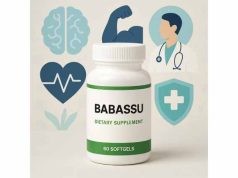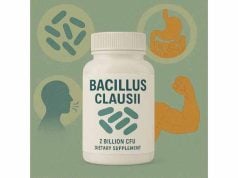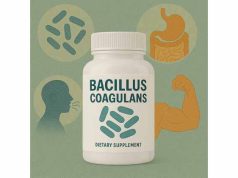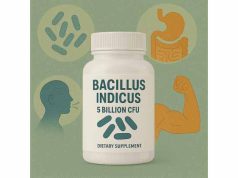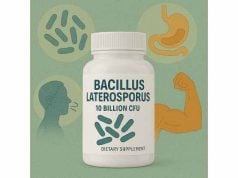
Blue green algae, a group of microscopic aquatic organisms including Spirulina and Aphanizomenon flos-aquae (AFA), have become sought-after superfoods thanks to their impressive nutrient content and wellness potential. These algae are celebrated for their rich protein, vitamins, minerals, and unique phytonutrients such as phycocyanin and chlorophyll, making them popular as supplements for energy, immune support, and overall vitality. Whether you’re looking for a plant-based protein, detox support, or natural antioxidants, blue green algae offer a wide array of health-promoting properties. This article explores the science, practical uses, optimal dosage, and important safety considerations of blue green algae to help you make the most informed, healthful choices.
Key Takeaways
- Blue green algae provide complete plant-based protein, antioxidants, and vital micronutrients.
- Spirulina and AFA are the two most commonly used edible forms in supplements.
- May help support immune function, energy, healthy detox, and inflammation balance.
- Safety depends on sourcing—algae from contaminated water may contain toxins.
- Consult a healthcare provider before using, especially if pregnant, nursing, or managing a health condition.
Table of Contents
- Introduction to Blue Green Algae: Types, Supplement Forms, and Key Characteristics
- How Blue Green Algae Affect the Body: Biological Actions and Nutrient Profile
- Health Benefits of Blue Green Algae: Evidence-Based Uses and Popular Applications
- Blue Green Algae Safety Concerns, Side Effects, and Toxin Awareness
- Optimal Dosage, Usage Tips, and Administration of Blue Green Algae
- Frequently Asked Questions About Blue Green Algae
Introduction to Blue Green Algae: Types, Supplement Forms, and Key Characteristics
Blue green algae, scientifically known as cyanobacteria, are among the oldest life forms on earth. They thrive in freshwater and marine environments, converting sunlight into energy and producing a spectrum of beneficial nutrients. While the term “algae” is a misnomer (they’re technically bacteria, not plants), their greenish-blue hue comes from a combination of chlorophyll and phycocyanin pigments.
Popular Types Used in Supplements
- Spirulina (Arthrospira platensis): The most widely studied and consumed blue green algae, celebrated for its protein and antioxidant content.
- Aphanizomenon flos-aquae (AFA): Sourced mainly from Klamath Lake in Oregon, AFA is valued for its unique nutrient profile and claimed cognitive effects.
- Other species: Some supplements may contain blends of different blue green algae, but Spirulina and AFA are the primary commercial options.
Forms of Blue Green Algae Supplements
- Powder: Easily mixed into smoothies, juices, or water; popular for flexible dosing and recipes.
- Tablets or capsules: Convenient, pre-measured doses for those who prefer not to taste the algae.
- Liquid extracts: Concentrated, sometimes paired with other superfoods for enhanced effects.
Unique Characteristics
- Rich protein source: Contains all essential amino acids, making it a “complete protein.”
- Vibrant color: The blue-green pigment phycocyanin is a potent antioxidant.
- Natural micronutrients: Includes B vitamins, iron, magnesium, and trace elements.
- Sustainable cultivation: Can be grown in ponds with minimal land use, making it environmentally friendly.
Cultural and Historical Background
- Ancient use: Spirulina was harvested by the Aztecs in Mexico’s Lake Texcoco and used as a staple food. African communities around Lake Chad also traditionally consumed blue green algae.
- Modern superfood: Rediscovered in the 20th century, blue green algae are now promoted globally for their dense nutrition and adaptability to vegan and plant-based diets.
Who Uses Blue Green Algae?
- Vegetarians, vegans, and plant-based eaters seeking alternative protein sources
- Athletes looking for natural performance nutrition
- Individuals interested in natural detox, antioxidant, or immune support
- Wellness enthusiasts adding superfoods to daily smoothies and routines
Key Considerations When Choosing Blue Green Algae
- Sourcing matters: Toxins can accumulate in algae from contaminated water sources.
- Quality certification: Look for third-party testing for heavy metals, microcystins, and other contaminants.
- Personal preference: Powders have a strong, oceanic taste, while capsules avoid this entirely.
Blue green algae’s journey from ancient lakes to modern health food shelves highlights its enduring nutritional value and adaptability for a wide range of health goals.
How Blue Green Algae Affect the Body: Biological Actions and Nutrient Profile
What makes blue green algae so appealing as a supplement is its unique blend of nutrients, pigments, and bioactive compounds. These elements work together to provide broad-spectrum support for energy, immunity, and cellular health.
Nutritional Highlights
- Protein content: Spirulina is 55–70% protein by weight, making it one of the most concentrated sources in the plant kingdom. It contains all essential amino acids.
- Vitamins: Rich in B vitamins (especially B1, B2, B3, and B12 analogues), vitamin K, and small amounts of vitamin E.
- Minerals: Offers iron, calcium, magnesium, potassium, selenium, and trace minerals.
- Phytonutrients: High levels of phycocyanin (blue pigment with antioxidant and anti-inflammatory properties), chlorophyll (supports detoxification and oxygenation), and carotenoids such as beta-carotene.
- Omega-6 fatty acids: Notably gamma-linolenic acid (GLA), which supports healthy inflammation balance and skin health.
- Polysaccharides: Complex carbohydrates that may have immune-modulating effects.
Biological Actions in the Body
- Antioxidant defense: The pigments phycocyanin and beta-carotene help neutralize free radicals, protecting cells from oxidative damage.
- Immune system support: Polysaccharides and phycocyanin can stimulate natural killer cells and modulate immune response.
- Detoxification: Chlorophyll assists in binding heavy metals and supporting the body’s natural detox pathways.
- Anti-inflammatory effects: GLA and certain phycocyanins have been shown to help balance inflammation, potentially easing joint discomfort and supporting cardiovascular health.
- Energy and endurance: Blue green algae’s protein, vitamins, and minerals can help combat fatigue and support overall vitality, making it popular with athletes and busy individuals.
Bioavailability and Digestion
- Highly digestible: Unlike some plant proteins, blue green algae’s cell walls are easily broken down, aiding absorption.
- Natural enzymes: May support gut health and nutrient assimilation.
Special Pigments and Their Functions
- Phycocyanin: This blue pigment is unique to blue green algae and supports antioxidant and anti-inflammatory processes.
- Chlorophyll: The green pigment is thought to support detox and healthy blood formation.
- Beta-carotene: Supports vision, skin health, and immune function.
Summary Table: Blue Green Algae Nutrients and Actions
| Nutrient/Compound | Key Benefits | Role in the Body |
|---|---|---|
| Protein | Muscle, repair, energy | Complete amino acid profile |
| Phycocyanin | Antioxidant, immune | Neutralizes free radicals |
| Chlorophyll | Detox, oxygenation | Binds toxins, supports blood |
| GLA | Healthy inflammation | Skin, joints, heart health |
| Iron, Magnesium | Oxygen transport, energy | Anemia, fatigue, metabolism |
Blue green algae’s synergy of nutrients and bioactive pigments is the foundation of its wellness reputation, driving its use as a superfood in daily routines worldwide.
Health Benefits of Blue Green Algae: Evidence-Based Uses and Popular Applications
The rising popularity of blue green algae is supported by a combination of traditional use, nutritional science, and emerging research. Here’s how blue green algae can make a difference in your health and well-being:
1. Complete Plant-Based Protein for Muscle and Metabolism
- Muscle support: Ideal for athletes, vegans, and vegetarians, blue green algae’s amino acid profile can help build, repair, and maintain muscle tissue.
- Metabolism: Protein-rich foods contribute to satiety and support healthy weight management.
2. Immune System Modulation and Support
- Polysaccharides and phycocyanin: Studies show these can enhance the activity of natural killer cells, modulate inflammation, and support overall immune resilience.
- Seasonal wellness: Regular use may help the body adapt to environmental stressors and maintain immune balance.
3. Detoxification and Heavy Metal Binding
- Chlorophyll: This natural pigment may assist the body in eliminating toxins, including heavy metals, by binding them and aiding excretion.
- Liver health: Supports the body’s natural detox processes, especially in polluted or high-stress environments.
4. Antioxidant Defense and Cellular Health
- Free radical protection: Blue green algae’s potent antioxidants reduce oxidative stress, supporting skin, vision, and cellular longevity.
- Skin and aging: Antioxidants may promote clearer skin and slow visible aging.
5. Energy, Endurance, and Vitality
- B vitamins, iron, and magnesium: These nutrients help fight fatigue, support red blood cell formation, and optimize energy production.
- Athletic recovery: Blue green algae is used by athletes for enhanced stamina and post-exercise recovery.
6. Inflammation and Joint Comfort
- GLA content: May help ease mild joint discomfort, balance inflammation, and promote cardiovascular health.
7. Additional Wellness Benefits
- Cognitive support: Some evidence suggests potential benefits for focus, mental clarity, and mood, particularly with AFA species.
- Weight management: High protein and low-calorie content can help support healthy weight goals.
- Alkalizing effects: Blue green algae can help maintain a healthy acid-alkaline balance in the body.
Who Might Benefit from Blue Green Algae?
- Plant-based eaters seeking protein and micronutrients
- Athletes and active individuals needing extra recovery support
- People looking to enhance immunity, detoxification, or energy naturally
- Those aiming to address mild inflammation or promote healthy aging
Summary Table: Evidence-Based Blue Green Algae Benefits
| Benefit | Evidence Base | Ideal Users |
|---|---|---|
| Protein source | Strong | Vegans, vegetarians, athletes |
| Immune support | Moderate to strong | Wellness-focused individuals |
| Detoxification | Moderate | City dwellers, health seekers |
| Antioxidant defense | Strong | Those concerned with aging |
| Inflammation balance | Moderate | Joint, heart health support |
| Cognitive, energy | Emerging | Students, professionals |
Blue green algae is a true superfood, with wide-ranging benefits—but understanding safety, purity, and optimal use is just as important as its celebrated effects.
Blue Green Algae Safety Concerns, Side Effects, and Toxin Awareness
When considering blue green algae as a supplement, safety and purity are just as important as nutrient content. While Spirulina and AFA offer powerful wellness benefits, certain risks exist, especially when products are poorly sourced or improperly handled. This section provides a thorough overview of side effects, toxin risks, interactions, and best practices for safe use.
Potential Side Effects of Blue Green Algae
For most healthy adults, high-quality blue green algae are well tolerated when used at recommended doses. However, possible side effects include:
- Mild digestive discomfort: Some individuals may experience bloating, gas, or stomach cramps, particularly when first starting supplementation or if taking higher doses.
- Allergic reactions: Although rare, some people may be sensitive to cyanobacteria, resulting in rash, hives, or, in severe cases, difficulty breathing. Discontinue use and seek medical help if this occurs.
- Headache or dizziness: Usually mild and transient; may be related to detoxification or dehydration.
- Muscle pain or fatigue: Very rare, but reported in a few cases of contaminated or low-quality algae supplements.
Toxin Risks: Microcystins and Contaminants
The single most important safety factor with blue green algae supplements is the risk of contamination from harmful substances produced by some cyanobacteria. These include:
- Microcystins: Potent liver toxins produced by certain wild blue green algae. Chronic exposure can damage the liver and increase cancer risk.
- Heavy metals (lead, arsenic, mercury): Algae grown in polluted waters can absorb and concentrate these toxic elements.
- Bacteria and pathogens: Poor harvesting or drying practices may allow dangerous bacteria or mold to contaminate supplements.
How to Minimize Safety Risks
- Choose reputable brands: Select supplements with third-party certifications for purity and safety.
- Demand full transparency: Only buy products that clearly state their algae species, origin (country and water source), and batch testing results.
- Avoid wild-harvested products: Most safety issues have occurred with wild AFA from lakes, not cultivated Spirulina grown in controlled ponds.
- Check for recall or safety alerts: Regulatory agencies sometimes issue warnings or recalls for contaminated algae supplements.
- Start with a low dose: Ease your body into supplementation to reduce digestive discomfort or reactions.
Who Should Not Use Blue Green Algae?
- Pregnant or breastfeeding women: Due to potential toxin exposure, it is safest to avoid unless guided by a qualified healthcare provider.
- Children: Young children are more susceptible to toxins—supplementation is not recommended.
- People with autoimmune conditions: Some research suggests blue green algae may stimulate the immune system, which could be problematic for those with autoimmune diseases.
- Phenylketonuria (PKU): Blue green algae contain phenylalanine and should be avoided by individuals with PKU.
- Liver disease: Due to microcystin risk, those with liver disorders should only supplement under medical supervision.
Possible Interactions with Medications
- Immunosuppressants: Blue green algae may boost immune activity, which could interfere with drugs intended to suppress the immune system.
- Blood thinners: Vitamin K content in Spirulina may affect blood clotting—use caution if on anticoagulants.
- Other supplements: Combining with other “detox” or immune-boosting products may increase side effects.
Recognizing Signs of Toxicity or Adverse Effects
- Persistent nausea, vomiting, jaundice (yellowing of skin/eyes), or dark urine may indicate liver stress—stop use and seek immediate medical care.
- Severe allergy symptoms require emergency attention.
Summary Table: Blue Green Algae Safety Considerations
| Risk Factor | Main Concerns | How to Avoid |
|---|---|---|
| Microcystins | Liver toxicity, cancer risk | Buy only tested, certified products |
| Heavy metals | Nerve, kidney, developmental effects | Confirm batch testing and country of origin |
| Autoimmunity | Possible flare or stimulation | Consult a healthcare provider before use |
| Allergic reaction | Rash, hives, anaphylaxis | Start low, monitor for symptoms |
| Children/pregnancy | Higher susceptibility | Avoid or use only with doctor’s supervision |
How to Report a Problem or Suspected Reaction
- Save supplement packaging for batch/lot number information.
- Contact your healthcare provider and relevant regulatory authority if you experience serious side effects.
By choosing carefully sourced, properly labeled blue green algae supplements and following usage best practices, you can enjoy the nutritional benefits with confidence and peace of mind.
Optimal Dosage, Usage Tips, and Administration of Blue Green Algae
Blue green algae supplements offer flexibility in how they’re consumed, but understanding proper dosage, timing, and best practices is key for maximizing their benefits while minimizing side effects. Here’s your comprehensive guide to effective use.
Typical Dosage Guidelines
- Spirulina powder: 1–3 grams daily (about ½–1 teaspoon), mixed into water, juice, or smoothies. Some individuals safely use up to 10 grams, but start low and increase gradually.
- AFA (Klamath Lake algae): 500–2,000 mg daily, divided into one or two doses. Use lower amounts initially.
- Capsules/tablets: Follow product-specific instructions, as potencies vary.
- Liquid extracts: Potency differs—use the dropper or cap provided and refer to label directions.
How to Take Blue Green Algae for Best Results
- Start with a small dose: Give your digestive system time to adjust, especially if you’re new to green superfoods.
- Take with food or liquid: This enhances nutrient absorption and reduces the risk of stomach upset.
- Be consistent: Daily use is safe for most people, but consider taking breaks or “cycling” the supplement if using large amounts.
- Hydrate well: Algae can have a mild detoxifying effect, so drink plenty of water to support your body’s natural elimination pathways.
- Timing: Morning or midday is usually best, as the energizing nutrients may be stimulating for some people if taken late in the day.
Combining with Other Supplements
- Greens blends: Blue green algae combine well with chlorella, wheatgrass, or barley grass for a broader nutrient spectrum.
- Protein smoothies: Add to shakes for a complete amino acid boost.
- Not with certain medications: See the safety section for drug interaction cautions.
Adjusting Dosage for Special Populations
- Children: Not recommended due to toxin risk.
- Elderly: Start low and monitor for digestive tolerance.
- Pregnancy/lactation: Use only under medical advice.
Recognizing When to Reduce or Stop Use
- Persistent digestive discomfort, headache, rash, or new allergy symptoms.
- Signs of liver stress or fatigue.
- If you notice any adverse reaction, discontinue and seek medical guidance.
How to Choose a Quality Blue Green Algae Supplement
- Source: Prefer farmed Spirulina from trusted producers over wild AFA unless third-party tested.
- Certifications: Look for organic, non-GMO, and toxin-screened labels.
- Transparency: Companies should provide details on water source, testing methods, and batch purity.
Summary Table: Blue Green Algae Dosage and Use
| Supplement Type | Typical Daily Dose | Notes |
|---|---|---|
| Spirulina | 1–3 grams (½–1 tsp) | Start low, build as tolerated |
| AFA | 500–2,000 mg | Divide doses, verify purity |
| Capsules | Per label (usually 500 mg each) | Follow instructions |
| Liquid Extract | As directed | Potency varies |
Blue green algae work best when incorporated into a balanced lifestyle that includes a diverse diet, adequate hydration, and overall healthy habits.
Frequently Asked Questions About Blue Green Algae
What are the health benefits of blue green algae?
Blue green algae offer complete protein, antioxidants, vitamins, and minerals that support energy, immunity, detoxification, and healthy inflammation balance. Research also suggests possible benefits for cognitive function and skin health.
Is blue green algae safe for daily use?
Yes, when sourced from reputable brands and taken as directed, blue green algae are safe for most adults. Avoid use if pregnant, breastfeeding, a child, or managing autoimmune or liver disorders unless guided by a healthcare provider.
Can blue green algae help with detoxification?
Yes, thanks to chlorophyll and other phytonutrients, blue green algae support natural detox processes and may help the body bind and eliminate heavy metals and other toxins.
Are there side effects to taking blue green algae?
Most people tolerate blue green algae well. Side effects are rare but can include digestive upset, allergic reaction, or, with contaminated products, more serious toxicity.
What’s the difference between Spirulina and AFA?
Spirulina is farmed in controlled environments and widely used globally, while AFA is usually wild-harvested from lakes and prized for cognitive effects. Both provide similar protein and antioxidants.
How do I know if my blue green algae supplement is safe?
Choose brands with transparent sourcing, third-party testing, and batch certifications for toxins like microcystins and heavy metals. Avoid products with unclear or wild sources.
Can I combine blue green algae with other supplements?
Yes, blue green algae combine well with other greens, protein powders, and superfoods. If you’re on medication or managing a health condition, check with your healthcare provider first.
Disclaimer:
The information in this article is intended for educational purposes only and should not replace advice from your healthcare provider. Always consult a qualified professional before beginning any supplement, especially if you are pregnant, nursing, managing a health condition, or taking medications.
If you found this article useful, please share it on Facebook, X (formerly Twitter), or your preferred social network, and follow us for more evidence-based nutrition and wellness content. Your support helps us continue to deliver high-quality health resources!


